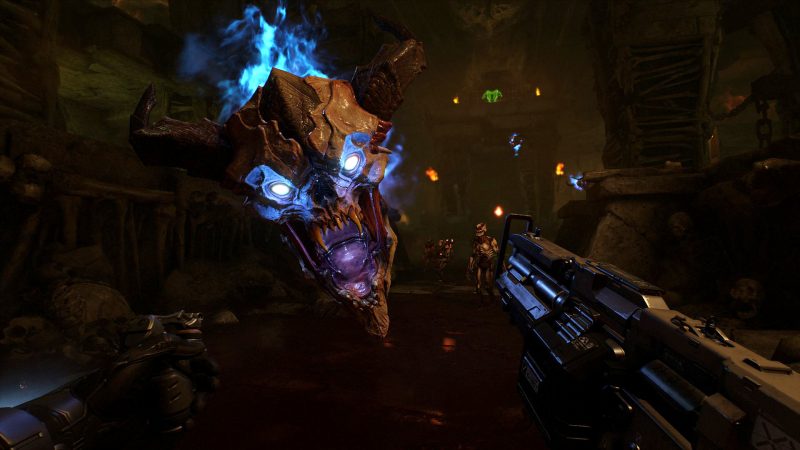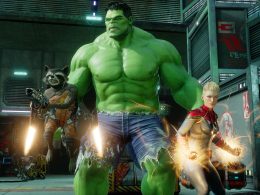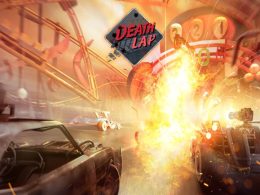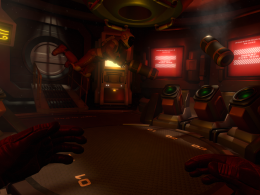Shortly after the demonic invasion of the UAC Mars research facility, you take on the role of the last known human survivor. Under a top-secret UAC protocol, your consciousness is transferred to an artificial brain matrix. The stated goal: restore operational stability and use any means necessary to stop the demon onslaught.
What about the Oculus Rift version?
So now the time has come: Doom VFR has been available for PSVR and HTC Vive since 1 December. In the meantime, Bethesda has issued a statement publishedwhy the title does not yet run properly on the Oculus Rift. Accordingly, the decision was made to only offer Vive and PSVR support at launch.
At first, people suspected a nasty prank by ZeniMax, Bethesda's holding company. Background: Doom veteran John Carmack had built the Oculus Rift prototype together with tinkerer Palmer Luckey during his time at id Software - which already belonged to Zenimax at the time - and the finished VR headset emerged years later. But when Oculus went to Facebook for 2.3 billion US dollars in 2014, the Oculus Rift suddenly became expensive for inventors and developers. They had lost a lawsuit for breach of a non-disclosure agreement. As a result, the jury decided in February that Carmack, Palmer Luckey and Facebook together had to pay ZeniMax a whopping 500 million US dollars.
Bethesda apologises for any "confusion" in the current statement. The clear goal is to offer all players the most stable and best possible experience on all platforms, according to official sources. This will take a while for Oculus Rift, although the latest Steam beta makes the game playable on the Rift. But let's move on to the PSVR and HTC Vive version, because there is a lot to talk about here as well.
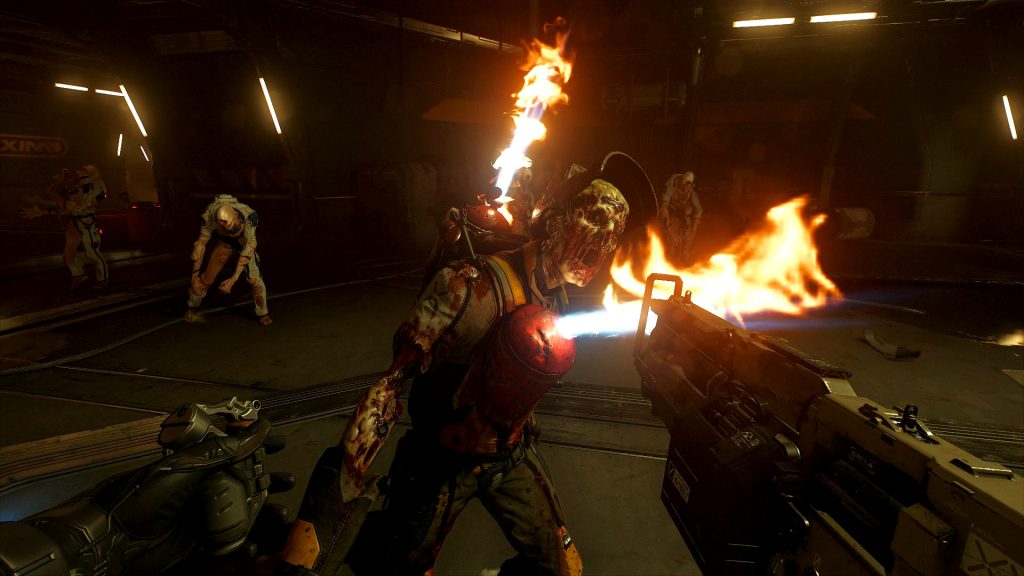
Let's just make a VR game once and then control it afterwards.
To start with: "Doom VFR" is not directly related to the 2016 original in terms of content. Good thing. The games industry cannot be boosted in the VR sector if only crispy games ever come back as VR remakes. Still, there's a lot reminiscent of the 2016 shooter that, because of its fast pace and mauling moves, resonates even with the target audience that might have been less fond of "Doom" in the past. But how do you bring such an action thriller to a VR headset without the speed of the movements immediately causing nausea?
The developers had some challenges to master here - and unfortunately failed a little. First of all, although the graphics of the title are very strong, the controls seem immature in places, as if the game had been designed first and a few last-minute implementations had been quickly tried out. While only ground teleportation is available on the Vive, but with 360-degree room scaling, you have a completely different gaming experience on the PlayStation VR with the additional full locomotion on the DualShock controller (which I personally like more).
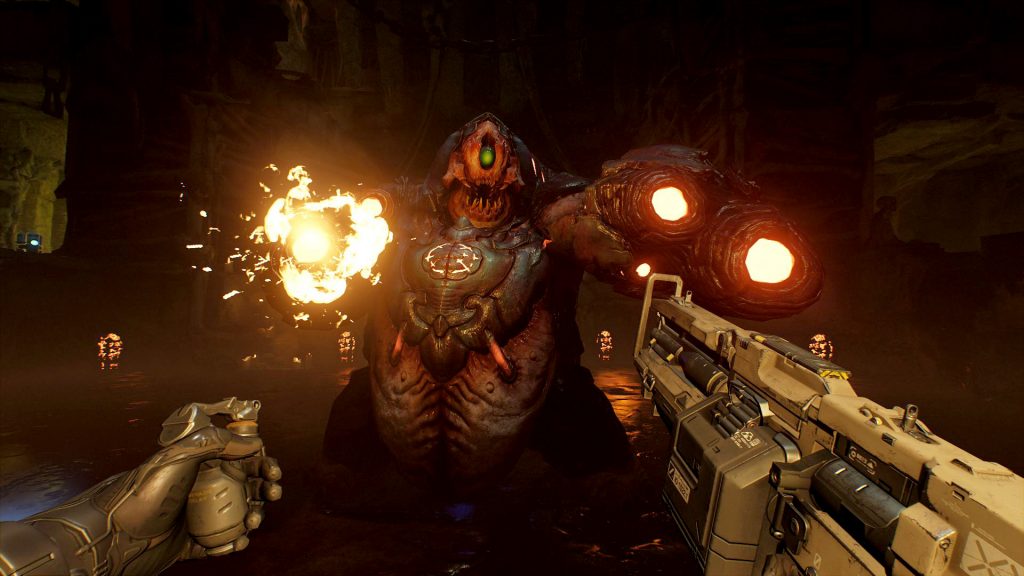
HTC Vive: teleport, teleport ...
Why they couldn't integrate this with the filigree touchpad on the HTC Vive leaves me with a big question mark, because it works brilliantly in games like "Serious Sam VR" and also in a "Doom BFG" mod. Using ground teleportation to beam through endless corridors doesn't feel so great. The problem with teleportation: The action in the game is not always straightforward. Keys or certain switches that have to be found are often linked to sections of several minutes in which nothing happens.
Apparently I'm not the only one with this opinion: there is also massive criticism in the Steam reviews and on Twitter from other sides. So Bethesda will probably (hopefully) add the natural locomotion afterwards. Otherwise, some modders will certainly do it.
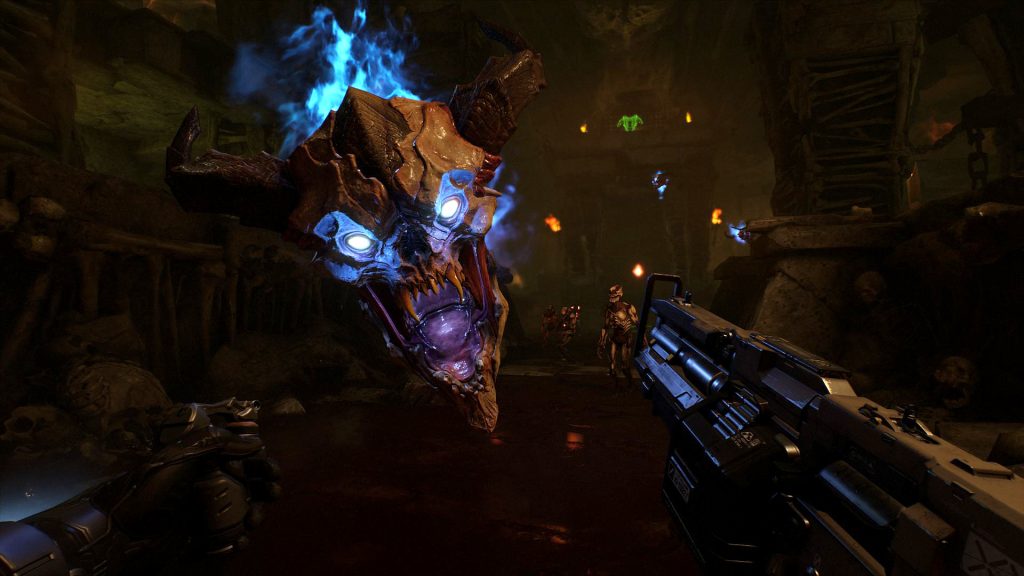
A hell of a ride with a one-way ticket
For the PlayStation VR version, there are even three input methods: one for the DualShock controller, one for the two PS4 Move controllers and, last but not least, an option for the PSVR Aim controller. If you play with the Move light sticks, however, there are even more complications than on the Vive: you then no longer have the directional control from the left analogue stick, as on the HTC glasses, but at least a more visually authentic weapon handling. In this mode, the hands no longer hang stiffly in the VR landscape. However, the Move controls are so messed up and Bethesda doesn't even offer alternative button assignments. When the dash buttons for dodging to the left and right are arranged one below the other on the left Move stick, it really makes me wonder what the developers were thinking.
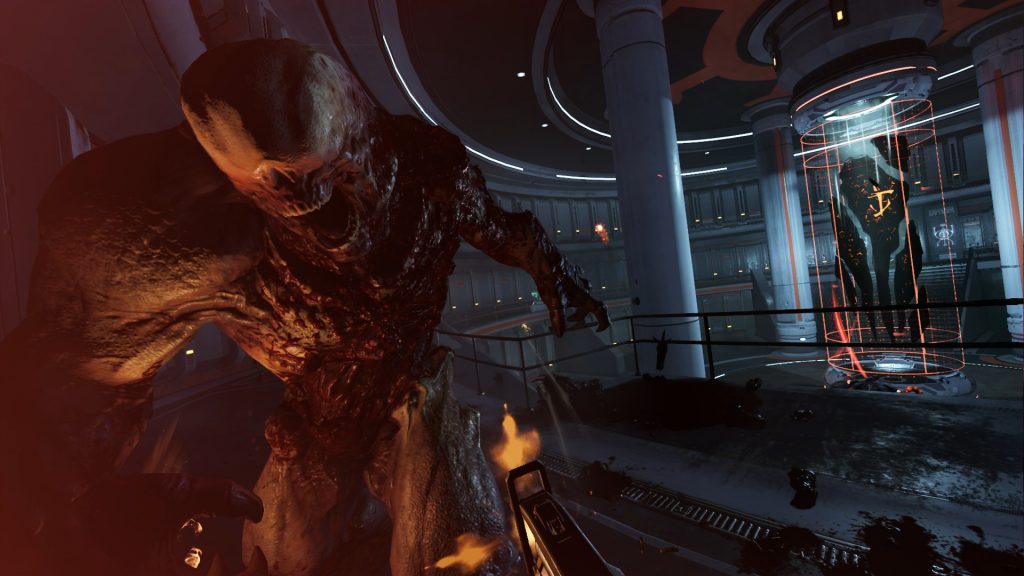
Which version is better?
Since we only have front tracking available on the PSVR, the 180-degree rotation is realised via a button on the right Move controller. I did not have the PSVR Aim Controller available for testing. However, the gun feeling should also be there. According to the first testers not be of the finest quality. With the LED pistol, unrestricted movement via the thumbstick is also available, but you will always see two virtual hands in front of you, which really dulls the immersion and is probably not comparable with the game experience of "Farpoint" or "Arizona Sunshine".
And here we have a fundamental problem: in my opinion, Bethesda developed the game first and the controls only afterwards. Neither the Vive nor the PSVR version satisfy me to the full extent. The PC version lacks the additional free movement, even if not all players tolerate it equally well. In both editions I miss a freely selectable button assignment. Ironically, I get along even better with the classic gamepad assignment and full locomotion on the PSVR than on the HTC Vive and was thus able to enjoy the title somewhat like a first-person shooter.
There are other opinions here. Sure, the Vive version is graphically a bit better and offers 360-degree room scaling. But that's no use to me if the touchpad on the right soon stops clicking because I've clicked around so much. Not exactly handy: Pressing the centre of the touchpad initiates teleportation, while you click around on the directional edges for dodging moves. That's why it's probably becoming more and more important in wave shooters to give players as many customisation options as possible in the control scheme.
Good game with stunning graphics
Despite all this, the graphics are quite a sight. On the PC, therefore, you need a decent graphics card of the GeForce GTX 1080 variety. A GTX 980 Ti can just about manage here if you don't switch on additional edge smoothing and other graphics features. On the PS4 Pro, we are very surprised at how good the visuals are. The textures are sharp enough and extremely detailed for a PSVR version. The soundtrack by Mick Gordon offers an explosive mix of industrial and whipping guitars, just like last year. The more familiar mood-setters are again used in scenes where you have to mow down a particularly large number of demons. Once the enemies are stunned, you can teleport right into the enemy brood instead of a classic finisher and set off on an explosive offal whirlwind. It remains, however, with short, crisp fate moves. The brutalities of the variable death blows of "Doom" (2016) do not exist here. That would probably also be a little too crass or too lengthy for VR.





